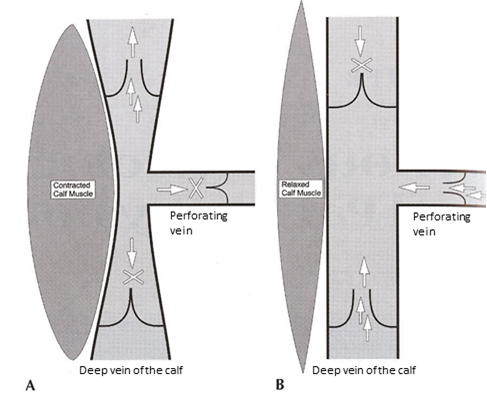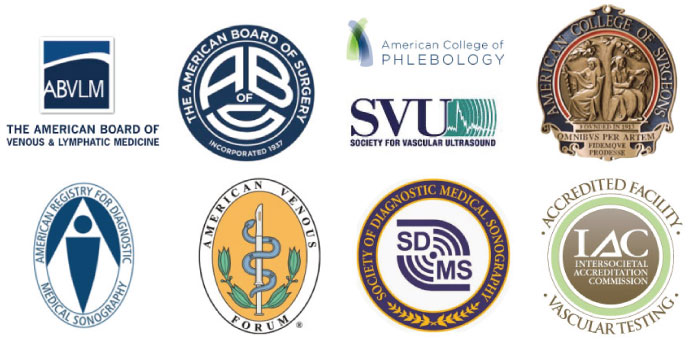|
We all hear about the beneficial effects of exercise on the cardiovascular system. “Cardio” makes the heart more efficient. Exercise, in general, elevates HDL cholesterol which in turn slows the development of atherosclerotic plaque in the coronary arteries, thus lessening the risk of heart attack. Very few of us discuss the beneficial effects of exercise on the venous system. The veins in the lower extremities receive blood from the muscles and deliver it to the heart. The blood is then pumped to the lungs where it receives oxygen to nourish the organs and muscles in the body. The veins have a tough job. Unlike arteries which have the benefit of gravity and the heart for pumping their blood down into the legs, veins do not benefit from the constant pumping action and have to fight gravity to move their blood up to the heart. In people with healthy veins, a series of one-way valves prevents the blood from settling down into the feet and ankles. Unfortunately, many people have valves that do not function properly, causing a condition known as venous insufficiency. Venous insufficiency causes symptoms such as aching, heaviness, and fatigue of the legs. In more severe cases this process damages the skin, leading to darkening, thickening, and even ulceration of the skin just above the ankles. So, how do the veins do it? Their blood receives its propulsion from contraction of the calf muscles, the gastrocnemius and soleus muscles. Phlebologists (experts in diseases of the veins) refer to this as the calf muscle pump, figure 1). This mechanism is so efficient that one contraction of the calf propels 60% of the blood in the leg toward the heart. 10 to 20 contractions decrease the pressure in the lower leg veins from 100mmHg to 20mmHg in a matter of seconds. Interestingly, many with venous insufficiency find that their symptoms improve soon after they begin walking or performing any exercise that results in contraction of the calf. With reduction of the pressure in the veins with exercise, the legs no longer ache or feel heavy. With regular continuous exercise such as walking, running, cycling, or use of an elliptical trainer or stair-stepper for 30 minutes a day can make the legs feel much better. With age or development of a neuromuscular disease, atrophy of the calf muscles can occur, resulting in the symptoms and sometimes the skin problems associated with venous insufficiency. People with atrophy of the calf muscles can benefit from exercises designed to strengthen them. Calf raises and dips while standing with the forefoot on a step can strengthen the calf muscle pump and reduce the effects of venous hypertension. If you want to be good to your veins, try 30 minutes of continuous exercise each day and exercise the calf muscles to keep them strong. Dr. Steven Kaufman is Board Certified in Surgery and Venous and Lymphatic Medicine. He practices at Total Vein Care, 1136 East Stuart Street, Suite 4102, Fort Collins, CO 80525. He can be reached at (970) 498-8346 or on the web at totalvein.net.
Comments are closed.
|
AuthorDr. Steven Kaufman is a board-certified surgeon and phlebologist specializing in the diagnosis and treatment of vein disorders. He is Northern Colorado’s leading vein care specialist, with the education, experience, advanced training, and positive patient outcomes to make him the preferred choice for the care of your vein problem. Archives
April 2024
Categories |
Total Vein Care - Vein Specialist in Northern Colorado
Total Vein Care is honored to be accredited and associated with the leading partners in our industry.
|
Total Vein Care
1136 E Stuart Street, Suite #4102 Fort Collins, CO 80525 (970) 498-8346 [email protected] |
Get In Touch:
Open Monday - Friday: 8 am - 5 pm
|
Website by Canopy Creative Marketing. Copyright © 2020. Total Vein Care . All Rights Reserved. Privacy Policy.


